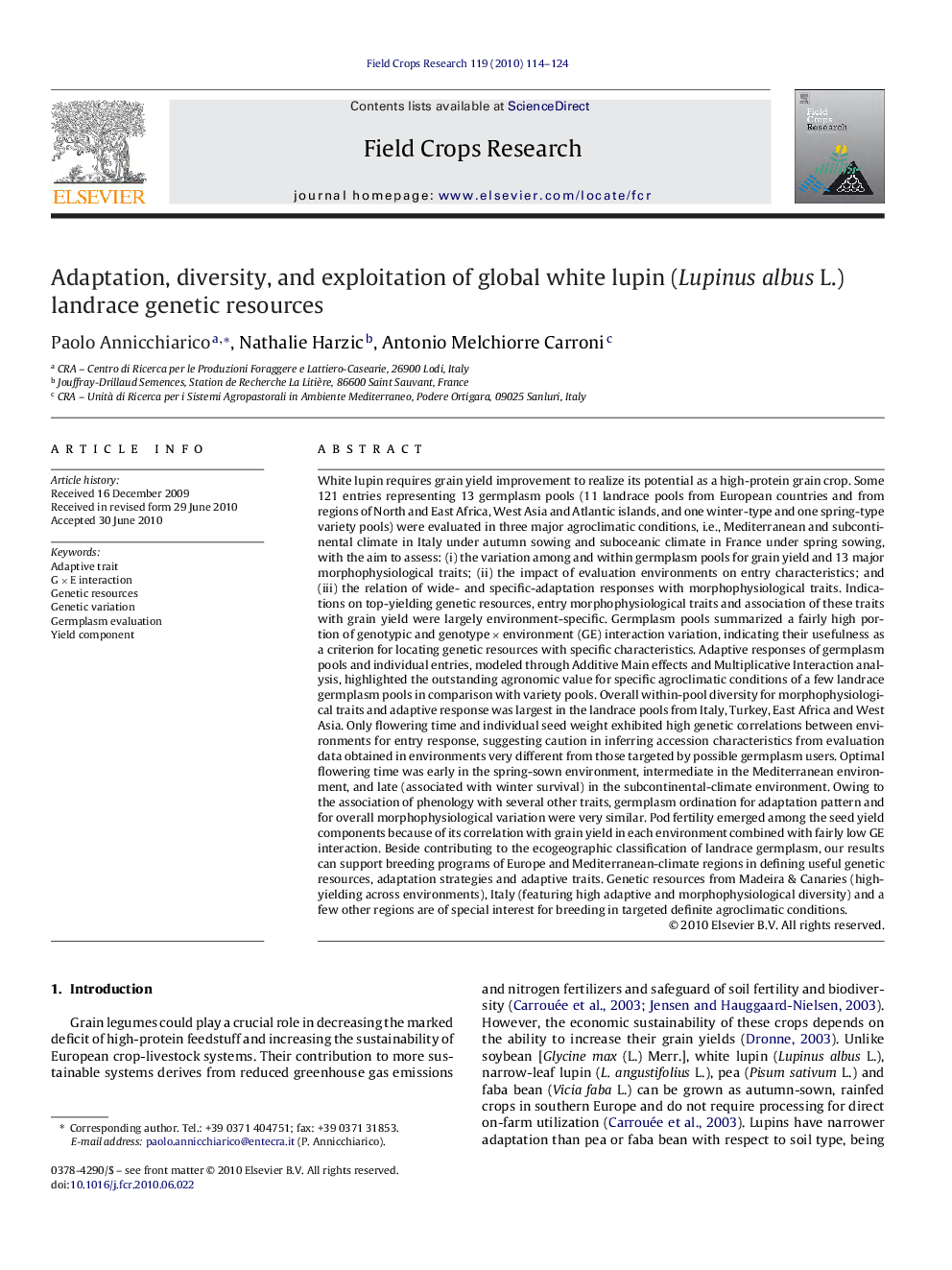| کد مقاله | کد نشریه | سال انتشار | مقاله انگلیسی | نسخه تمام متن |
|---|---|---|---|---|
| 4510981 | 1321885 | 2010 | 11 صفحه PDF | دانلود رایگان |

White lupin requires grain yield improvement to realize its potential as a high-protein grain crop. Some 121 entries representing 13 germplasm pools (11 landrace pools from European countries and from regions of North and East Africa, West Asia and Atlantic islands, and one winter-type and one spring-type variety pools) were evaluated in three major agroclimatic conditions, i.e., Mediterranean and subcontinental climate in Italy under autumn sowing and suboceanic climate in France under spring sowing, with the aim to assess: (i) the variation among and within germplasm pools for grain yield and 13 major morphophysiological traits; (ii) the impact of evaluation environments on entry characteristics; and (iii) the relation of wide- and specific-adaptation responses with morphophysiological traits. Indications on top-yielding genetic resources, entry morphophysiological traits and association of these traits with grain yield were largely environment-specific. Germplasm pools summarized a fairly high portion of genotypic and genotype × environment (GE) interaction variation, indicating their usefulness as a criterion for locating genetic resources with specific characteristics. Adaptive responses of germplasm pools and individual entries, modeled through Additive Main effects and Multiplicative Interaction analysis, highlighted the outstanding agronomic value for specific agroclimatic conditions of a few landrace germplasm pools in comparison with variety pools. Overall within-pool diversity for morphophysiological traits and adaptive response was largest in the landrace pools from Italy, Turkey, East Africa and West Asia. Only flowering time and individual seed weight exhibited high genetic correlations between environments for entry response, suggesting caution in inferring accession characteristics from evaluation data obtained in environments very different from those targeted by possible germplasm users. Optimal flowering time was early in the spring-sown environment, intermediate in the Mediterranean environment, and late (associated with winter survival) in the subcontinental-climate environment. Owing to the association of phenology with several other traits, germplasm ordination for adaptation pattern and for overall morphophysiological variation were very similar. Pod fertility emerged among the seed yield components because of its correlation with grain yield in each environment combined with fairly low GE interaction. Beside contributing to the ecogeographic classification of landrace germplasm, our results can support breeding programs of Europe and Mediterranean-climate regions in defining useful genetic resources, adaptation strategies and adaptive traits. Genetic resources from Madeira & Canaries (high-yielding across environments), Italy (featuring high adaptive and morphophysiological diversity) and a few other regions are of special interest for breeding in targeted definite agroclimatic conditions.
Journal: Field Crops Research - Volume 119, Issue 1, 9 October 2010, Pages 114–124